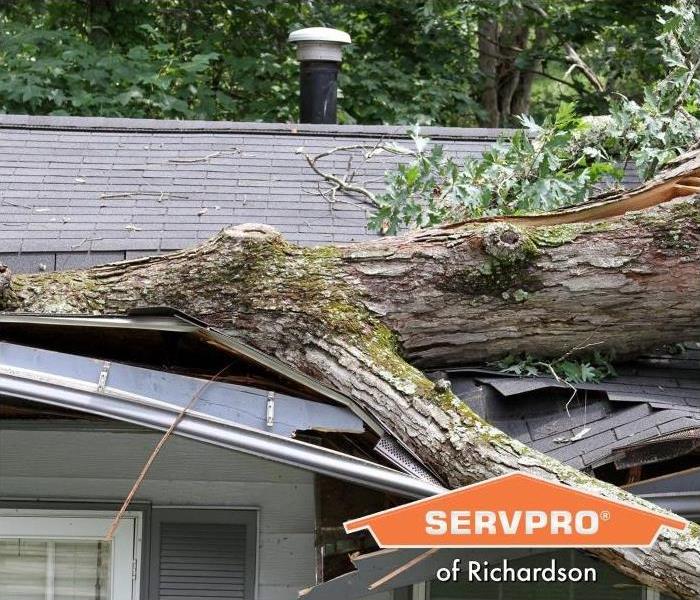Preparing Trees for Storm Season in North Dallas
4/7/2021 (Permalink)
 Trust SERVPRO of Richardson and their team of experts to help recover and restore your storm-damaged property.
Trust SERVPRO of Richardson and their team of experts to help recover and restore your storm-damaged property.
Trees beautify any property and give us much-needed shade during the hot months. However, storms can be unkind to trees, forcing them down with strong winds or sending destructive lightning bolts down their trunks.
When a tall tree comes down, it can damage a roof, break a window, or down utility lines. When there are heavy soil saturation and persistent gusts of winds, even the strongest trees can collapse.
While we can’t defend our trees from nature’s fury, we can take measures to mitigate damage to trees and other objects. Make time to tend to your trees before the next storm season hits.
Examine the Trees
Inspect each tree for damage such as “deadwood,” decomposition, dense canopies, splits, or damaged trunks. Infestation, illness, or other weaknesses can topple a tree in a storm.
Next, consider proximity to structures and powerlines. Tall trees too close to these things are a risk. Sometimes utility crews will come through and trim back problem trees. While this should solve the problem, the tree is vulnerable to infection or infestation if the cuts are done incorrectly.
Once you become aware of any tree problems on your property, you can plan the best course of action for each issue you discover.
Perform Maintenance
Trees need seasonal pruning, pest control, mulching, watering, fertilization, and care by an arborist when needed.
Plan to prune your trees in the late fall or early spring. Removing branches that are too close to structures plus dead or weak branches reduces the chance of damage. Pruning the low damage of young trees helps you avoid instability from multiple leaders.
Be careful not to overcut the limbs or cut into the root system. If you are unsure of how to properly prune a tree, consult the experts or hire an arborist.
Thin the crowns by cutting back limbs and foliage from inside the crown. This reduces the weight and allows more air and sunlight to come through.
As for new planting, there are other best practices. New trees should be planted where roots won’t be intrusive or where they won’t tower over things they can fall on. Use stakes and ties to train trees to grow straight up so they don’t bend down.
Be mindful of where you dispose of cut wood and branches. These can become projectiles during a storm.
Call an Arborist
Some tree challenges can leave the average homeowner stumped. Arborists will be able to properly assess storm damage risk factors and help you save your favorite trees from infection and decay.
When in doubt, call the experts. Being proactive saves you emergency tree removal expenses and inconvenience.
Call SERVPRO for Help After a Storm
While we may not be arborists, we specialize in Richardson storm damage restoration. We’ve been recovering storm-damaged properties for over 30 years. If a fallen tree damages your home or business, we’re ready 24/7 to come help! After you call your insurance company, call us at (972) 690-1414.






 24/7 Emergency Service
24/7 Emergency Service